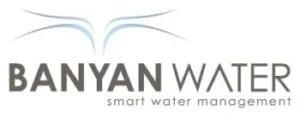
Across the country, facility managers and investors are looking for ways to promote sustainable business models. Some groups focus on environmental projects because they are striving to be good stewards of the environment, and others recognize that by reducing water and energy bills they can significantly increase net operating income.
Improving a property’s energy or water efficiency comes with up-front investment, but yields a long-term savings. Examples include: solar panels, smart irrigation, and LED lighting.
The challenge for many facilities professionals is how to obtain the up-front funds to make these improvements. Whether your primary objective is to meet sustainability goals or reduce operating costs, there are multiple options for financing. Here are a few smart ways to finance that sustainability project you’ve been postponing due to lack of financial resources.
Fannie Mae Green Rewards Loans for Multifamily
In 2016, Fannie Mae gave out over $3.5 billion in green financing loans. Their “Green Rewards” loans provide lower interest rates, additional loan proceeds, and a free Energy & Water Audit Report for the property. In order to qualify for these loans, the borrower must commit to installing capital improvements that target a 20% reduction in the property’s energy or water use. This loan is specifically designed for multifamily units, whether those units are conventional or affordable housing.
Chrissa Pagitsas of Fannie Mae said, “over time, properties become increasingly energy and water inefficient as equipment and systems age and new efficient technologies come onto the market. Our Green Rewards loan is tailored for the owner ready to increase cash flow and improve property quality by making energy- and water-saving improvements.”
PACE Financing for Commercial Buildings
PACE programs are now active in 19 states, including Texas, California, Colorado, Florida and Oregon. PACE offers low-cost, long-term financing for sustainability projects such as energy efficiency improvements, water conservation, and renewable energy projects. This type of off-balance-sheet financing is particularly attractive for properties whose tenants are billed back for operating expenses including property taxes, electricity, water, etc. (i.e. a triple net lease).
PACE financing companies work with local taxing districts to bill the cost of the project through the upgraded building’s property taxes annually. Meaning that the loan is paid back by a temporary (usually 20-year) increase in the building’s property taxes.
Most tenants like this method as they receive the benefits of lower monthly energy and water bills, which more than makes up for the higher property taxes. Not to mention, that new building utilities make working on the property cleaner and more comfortable. Owners enjoy an upgraded utility infrastructure in their building, lower common area cost and happy tenants. PACE projects tend to start at $50,000 or more for upgrades to a single property.
Green Revolving Funds for Universities
An interesting financing concept in the world of higher education is called Green Revolving Funds (GRF). Institutions including Harvard, Arizona State University and UCLA all have established Green Revolving Funds, which fund sustainability projects around campus. The programs are designed with the central idea that sustainability upgrades pay for themselves over time. The GRFs offer loans to departments within the university to make sustainability upgrades. The loans are paid back through the savings achieved by the upgrades (i.e. if an upgrade lowers utility bills by $1000 per month, then the loan is paid back with that saved money) Once the loan is repaid, the funds are again available for more sustainability upgrades. Harvard’s website provides a nice overview of how their fund is administered, including case studies of some of their successful projects. According to the organization behind many of these funds, The Billion Dollar Green Challenge, Green Revolving Funds are also very attractive investment options, “conservative estimates show that a fund can consistently earn a 20+ percent annual return on investment yielding a median annual ROI of 32 percent—with no losses—for 52 existing green revolving funds.”
Engaging in sustainability upgrades can have an intimidating up-front price tag, but financing options that meet the needs of various types of properties exist, and can help you improve your property and your bottom line in the long-run.
To learn more about improving your water efficiency using these financing options, contact Banyan Water at info@banyanwater.com.
